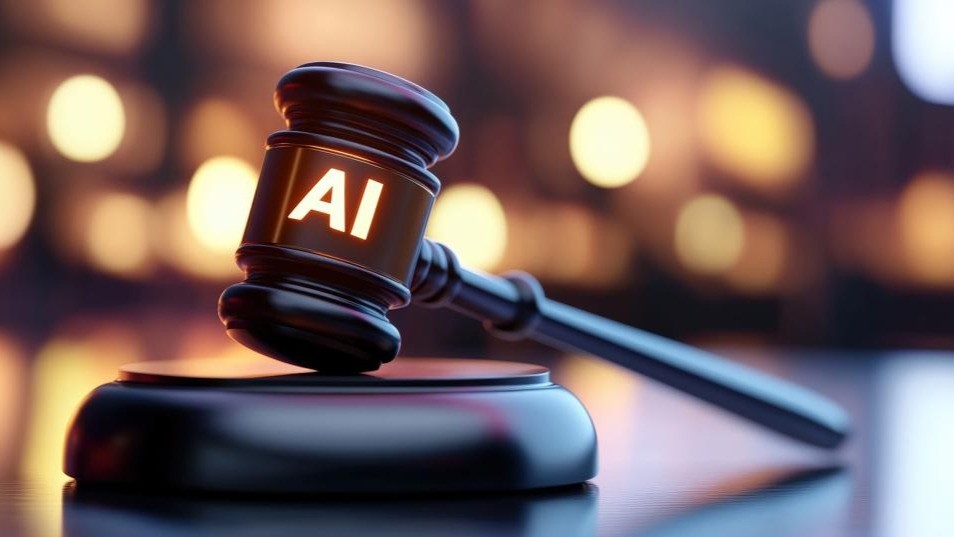What are the Four Types of AI?
2 July 2021
Many people are familiar with some of the subsets of artificial intelligence (AI) such as machine learning and natural language processing, but don’t know there are four types of artificial intelligence. Here we dive into what you need to know about the four types of AI—reactive, limited memory, theory of mind and self-aware artificial intelligence.

By now, most people are familiar with the term artificial intelligence (AI). They may have heard about machine learning or natural language processing and figured those were types of AI, but they are actually subsets of artificial intelligence. What most outside of technology circles don’t realize is there are four distinct types of AI that include: reactive, limited memory, theory of mind and self-aware artificial intelligence. Let’s take a look at each to explore what they have to offer.
Reactive AI
The most basic but still quite useful artificial intelligence is called reactive AI because it reacts to existing conditions as its name suggests. Deep Blue, the supercomputer created by IBM in the 1980s that ultimately competed and won a chess match against reigning world champion Garry Kasparov, is a notable example of reactive AI.
Reactive AI functions the way it was programmed with a predictable output based on the input it receives. These reactive machines will respond to identical situations in the exact same way every time. There will never be a variance in action if the input is the same. Reactive machines aren’t able to learn or conceive of the past or future. Spam filters and the Netflix recommendation engine are other examples of reactive AI.
Certainly, reactive AI was an incredible accomplishment. Since very little human action is solely reactionary, in order for AI to be on par with human intelligence it needed to advance.
Limited memory AI
The next most sophisticated AI is called limited memory AI. It’s characterized by the ability to absorb learning data and improve over time based on its experience similar to the way the human brain’s neurons connect. This is the AI that is widely used and being perfected today.
Deep learning algorithms and the deep learning revolution of 2012 made limited memory AI possible. With limited memory AI, the AI environment is built so that models are automatically trained and then updated based on the model behavior.
Limited memory AI can complete complex classification tasks and uses historical data to make predictions. Self-driving cars use limited memory AI because the algorithms that power these vehicles use data they were trained and programmed on to understand how to operate but can also interpret data it observes to read its environment and adjust when necessary. The reaction time of autonomous vehicles improved significantly with limited memory AI, an important result that makes them safer on public roads.
Theory of mind AI
When machines acquire decision-making capabilities equal to humans, we will have achieved theory of mind AI. This is the next frontier for AI. An important aspect of this AI is that machines would have the capability to understand and remember emotions and adjust behavior based on those emotions just as humans can in social interactions.
Although theory of mind AI has not been fully achieved, the robots Kismet (introduced in 2000) and Sophia (2016) showed some aspects of this type of AI. Kismet recognized emotions and could replicate them through its facial features such as eyes, eyebrows, lips and ears. Sophia, a humanoid robot, along with her human-like likeness was also able to “see” emotions and respond appropriately.
One of the hurdles machines will have in achieving theory of mind AI is that they would have to rapidly shift behavior based on emotions to mimic how fluid this process is in human communication. However, when this feat is accomplished it can open the door to robots supporting everyday tasks including providing human companionship.
Theory of mind AI will be better equipped to work with humans in an emotionally intelligent manner than other forms of AI. Researchers in artificial emotional intelligence are already making headway, but there’s much work to do before AI can treat each human appropriately to the situation.
Self-aware AI
The final type of AI is self-aware AI. This will be when machines are not only aware of emotions and mental states of others, but also their own. When self-aware AI is achieved we would have AI that has human-level consciousness and equals human intelligence with the same needs, desires and emotions.
At the moment, this AI hasn’t been developed successfully yet because we don’t have the hardware or algorithms that will support it. When we do, will this artificial superintelligence (ASI) make it possible for machines to take over the world as some ponder? Or will they help create and collaborate with humans? Perhaps this won’t even be the pinnacle of artificial intelligence and we will discover there is a fifth type. Time will tell. Until then, AI researchers will continue to enhance limited memory AI and work to develop theory of mind AI.
Where to go from here
If you would like to know more about Artificial Intelligence, check out my articles on:
- What is AI?
- How To Put AI Into A Business To Accelerate Performance?
- Are Alexa And Siri Considered AI?
- What Is The Importance Of Artificial Intelligence (AI)
Or browse the Artificial Intelligence & Machine Learning to find the metrics that matter most to you.
Related Articles
Flying Taxis And Self-Driving Trucks Arrive In 2026: 6 Transport Trends To Watch
By now, “smart” versions exist of just about every home appliance, gadget and gizmos we can think of. However, manufacturers continue[...]
Technology in Action: My Key Takeaways on How AI and Quantum Are Accelerating Global Transformation
By now, “smart” versions exist of just about every home appliance, gadget and gizmos we can think of. However, manufacturers continue[...]
The 10 Biggest Consumer Technology Trends Of 2026
By now, “smart” versions exist of just about every home appliance, gadget and gizmos we can think of. However, manufacturers continue[...]
8 AI Ethics Trends That Will Redefine Trust And Accountability In 2026
By now, “smart” versions exist of just about every home appliance, gadget and gizmos we can think of. However, manufacturers continue[...]
The 7 Banking And Fintech Trends That Will Define 2026
By now, “smart” versions exist of just about every home appliance, gadget and gizmos we can think of. However, manufacturers continue[...]
The 8 Biggest Healthcare Technology Trends To Watch In 2026
By now, “smart” versions exist of just about every home appliance, gadget and gizmos we can think of. However, manufacturers continue[...]
Sign up to Stay in Touch!
Bernard Marr is a world-renowned futurist, influencer and thought leader in the fields of business and technology, with a passion for using technology for the good of humanity.
He is a best-selling author of over 20 books, writes a regular column for Forbes and advises and coaches many of the world’s best-known organisations.
He has a combined following of 4 million people across his social media channels and newsletters and was ranked by LinkedIn as one of the top 5 business influencers in the world.
Bernard’s latest book is ‘Generative AI in Practice’.










Social Media